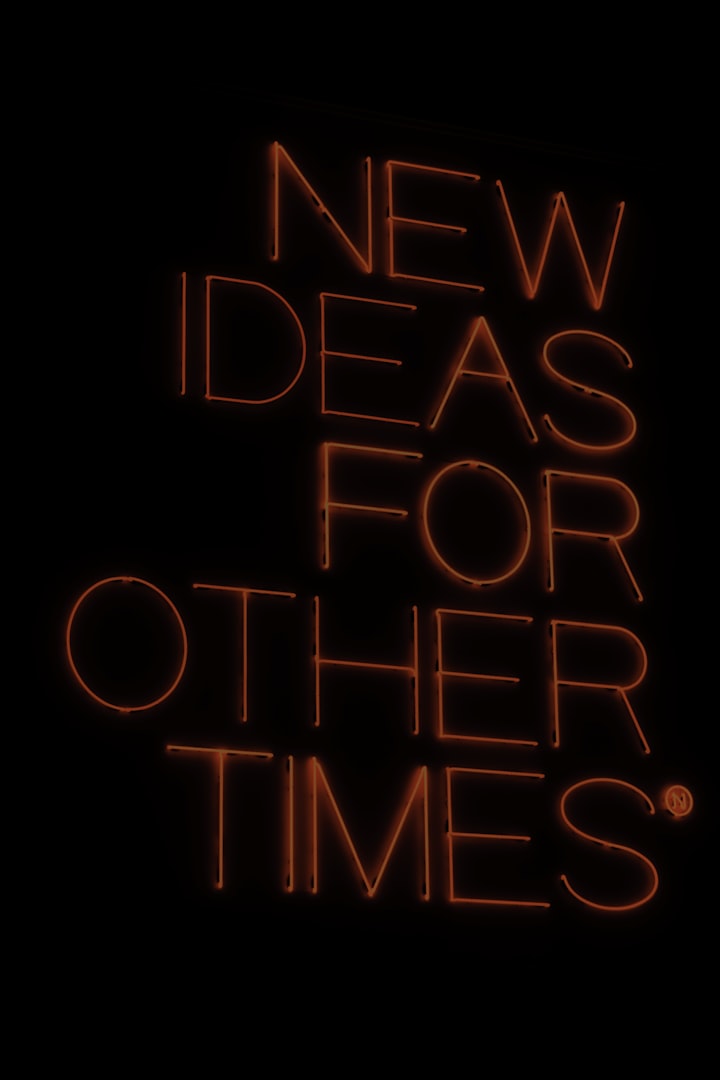Connecting Ideas: A Necessity
By Brother Lawrence Luke

In today's fast-paced digital age, connecting ideas has become more important than ever before. The rapid advancement of technology has made it easier for individuals and businesses to share their thoughts, ideas, and innovations with the world. However, as we become more connected, we are also faced with the challenge of protecting these ideas.
The question we must ask ourselves is: is it better to connect ideas today than to protect them? The answer, quite simply, is yes.
One of the most obvious benefits of connecting ideas is the ability to collaborate and innovate. When individuals and organizations share their ideas freely, it allows for the cross-pollination of thought and the development of new and improved solutions. This is exemplified in the open-source software community, where developers from all over the world collaborate to create and improve upon software for the greater good.
"The power of an open-source network is greater than the sum of its parts." - Tim O'Reilly
When we connect ideas, we open ourselves up to new perspectives, opportunities, and innovations. We create a platform for collaboration and growth, where ideas can be shared, refined, and built upon. As Albert Einstein once said, "Imagination is more important than knowledge. Knowledge is limited. Imagination encircles the world."
One of the most compelling examples of the power of connecting ideas is the rise of open-source software. Open-source software is software that is freely available to the public, with the source code open for anyone to use, modify, and distribute. This model has led to the development of some of the most widely used software in the world, such as Linux, the Apache web server, and the Firefox web browser.
Open-source software is a prime example of the power of connecting ideas. By making the source code freely available, developers from all over the world can collaborate and build upon each other's work. This has led to the creation of software that is not only more reliable and efficient, but also more cost-effective for businesses and individuals.
Another example of the power of connecting ideas is the rise of crowdfunding. Crowdfunding is a method of raising capital for a project or business by soliciting small donations from a large number of people. This model has revolutionized the way businesses and entrepreneurs raise capital, enabling them to bypass traditional sources of funding such as banks and venture capital firms.
Crowdfunding is another prime example of the power of connecting ideas. By connecting entrepreneurs with potential investors, crowdfunding has enabled businesses to raise capital from a wider range of sources. This has led to the creation of new products, services, and technologies that would not have been possible without crowdfunding.
Furthermore, connecting ideas allows for the dissemination of knowledge and the democratization of information. In today's world, access to information is essential for personal and societal growth. By connecting ideas, we can ensure that knowledge and information is widely available, leading to a more informed and educated population. This is exemplified by the rise of online education platforms, such as Coursera and Khan Academy, which allow individuals from all over the world to access high-quality education for free.
"The best way to predict the future is to invent it." - Alan Kay
On the other hand, protecting ideas can lead to stagnation and a lack of progress. When individuals and organizations hoard their ideas and knowledge, it limits the potential for growth and innovation. This is exemplified in the pharmaceutical industry, where patents and intellectual property laws can prevent the development of cheaper and more widely available drugs.
"Innovation is the process of turning ideas into manufacturable and marketable form." - W. Edwards Deming
Additionally, protecting ideas can also lead to inequality and a lack of access to information and knowledge. When ideas and knowledge are controlled by a select few, it can perpetuate existing power imbalances and prevent marginalized communities from accessing the resources they need to progress.
"The future belongs to those who understand that doing more with less is compassionate, prosperous, and enduring, and thus more intelligent, even competitive." - Paul Hawken
While protecting ideas is important, it is also important to recognize that connecting ideas is essential for innovation and growth. As Mark Zuckerberg, CEO of Facebook, said, "The biggest risk is not taking any risk... In a world that's changing quickly, the only strategy that is guaranteed to fail is not taking risks."
In conclusion, connecting ideas is essential for innovation and growth in today's fast-paced digital age. The rise of open-source software and crowdfunding are just two examples of the power of connecting ideas. By connecting ideas, we open ourselves up to new perspectives, opportunities, and innovations. As Steve Jobs once said, "Innovation distinguishes between a leader and a follower." Let us strive to be leaders in connecting ideas, rather than protecting them.
About the Creator
Lawrence Luke
Meet Lawrence Luke, Founder and CEO of 360 Thinking Consultancy, an expert in Research and decision making. He helps organizations and individuals make better decisions through research and analysis. Follow him on WhatsApp +265996655810.





Comments
There are no comments for this story
Be the first to respond and start the conversation.